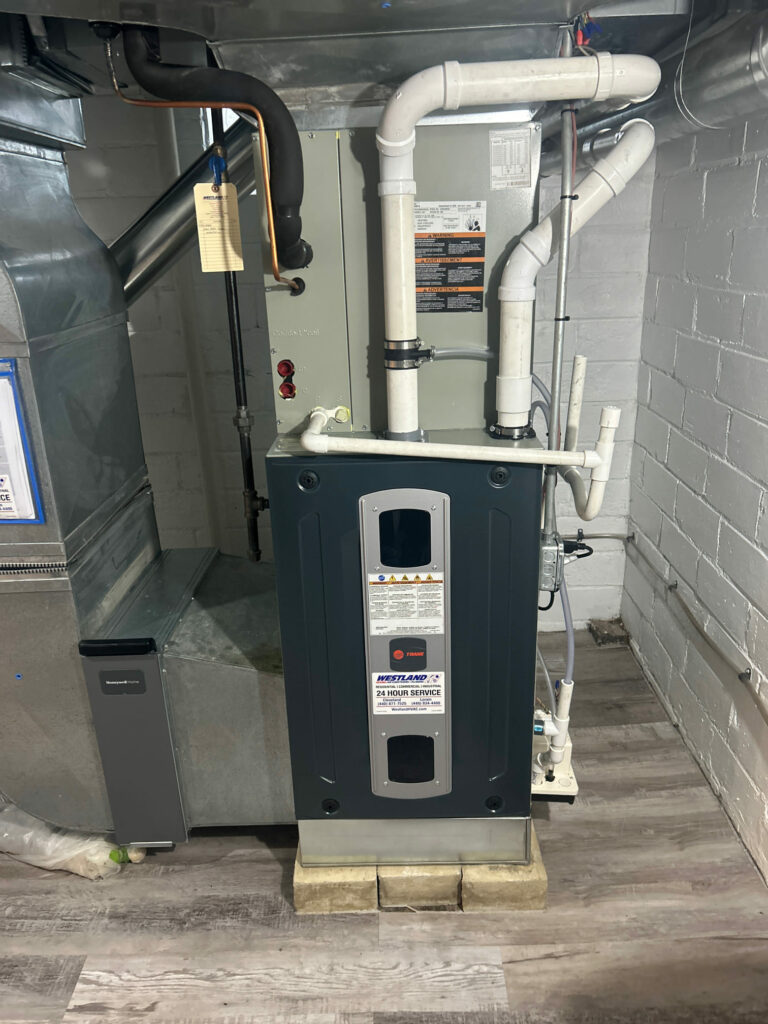Being prepared can make the difference between getting back up and running after a natural disaster and losing your business permanently. Here’s an emergency prep checklist to help you prepare a plan for your business, including recommendations for how to protect your HVAC system in the event of a devastating storm.
Download this checklist and keep it handy. Also, review more detailed information and resources listed below the emergency prep checklist.

Steps to create an HVAC emergency prep checklist for your business
STEP 1: Prepare a readiness plan in advance
- Make a list of all the tasks that need to be done to protect your business in advance of the storm, including boarding up windows, shutting off gas appliances, and backing up computer data.
- Consult disaster planning resources to make sure you’ve covered all the bases for your location and type of business. Some good resources include: The New York Times Small Business Guide to Disaster Recovery, Ready Rating from the American Red Cross, and facilities management industry associations such as BOMA.
- Include when tasks must be done and who is responsible.
- Prepare backup communication systems including phone chains and call in systems so employees know what to do. Phone systems should be hosted off-site to prevent disruption in a local emergency. Redundancy for Internet access and phones should be in place. For example, implement T1 lines, cable modems, and wireless communication, ideally hosted in different physical locations, so service will still be available even if one access provider goes down.
- Go over the plan regularly with employees so everyone understands what to do in the event of an emergency.
STEP 2: Make sure service vendors are ready to support you
Think beyond your own employees and make sure your service vendors are also prepared to support you in an emergency. Ask the following questions:
- Is redundancy in place for phone and Internet access?
- Can you provide multiple ways to contact your office in an emergency situation, including phone numbers, email, and even social media contact information?
- Do you maintain multiple storage facilities for trucks and equipment, as well as relationships with several supply houses in different locations for parts and supplies?
- Do you have generators for emergency power?
- Will you have access to maintenance and equipment records in an emergency situation? Is data stored remotely (either offsite or in a cloud-based system) and accessible via wireless devices?
- Do you have protocols regarding how to prioritize service requests and how to communicate expected response times?
- Do you have contacts for information such as road closures, power availability and access to affected areas? (Protocols for coordinating with law enforcement, fire officials and emergency responders, utility companies and other agencies can greatly improve your contractor’s response times and ability to get you back in business faster.)
Learn more: Does Your HVAC Service Provider Have a Disaster Recovery Plan?
STEP 3: Prepare your HVAC equipment
- Whenever possible, install equipment on elevated platforms to minimize the chance of flood damage. TIP: Consider this strategy for all computer equipment and even important business records.
- Prevent wind damage by ensuring that the bolts to the base are intact and tight.
- If you don’t already have them, get hurricane straps for outdoor HVAC units and covers designed to fit your units properly.
- Periodically inspect hurricane strap hooks for any corrosion and damage and have them replaced if needed.
STEP 4: BEFORE a storm
- Secure outdoor equipment with hurricane straps.
- Turn off the power to all HVAC equipment. That means both at the circuit breaker and at all thermostats. This simple action prevents damage to the compressor and other components from power surges both during the storm and when power comes back on. You also prevent the risk of fire or electric shock.
STEP 5: AFTER a storm
IMPORTANT: DON’T turn equipment back on yet! Have it inspected by a professional first!
Exposure to even a small amount of water can cause corrosion and damage, even if the outside of the unit looks dry. Your system could fail weeks later from damage caused by a storm, even if it seems to come back up with no problem.
Before powering up again, call in your NYC HVAC service company to inspect it for any signs of electrical or water damage. This is critical when there has been any flooding, especially from salt water. Don’t skip this step!
If you follow these guidelines and prepare in advance, you’ll minimize the stress, the cost and the time it takes to recover from a major storm.
Whether you require installation, repair, or maintenance, our technicians will assist you with top-quality service at any time of the day or night. Take comfort in knowing your indoor air quality is the best it can be with MOE heating & cooling services Ontario's solution for heating, air conditioning, and ventilation that’s cooler than the rest.
Contact us to schedule a visit. Our qualified team of technicians, are always ready to help you and guide you for heating and cooling issues. Weather you want to replace an old furnace or install a brand new air conditioner, we are here to help you. Our main office is at Kitchener but we can service most of Ontario's cities
Source link




Add Comment